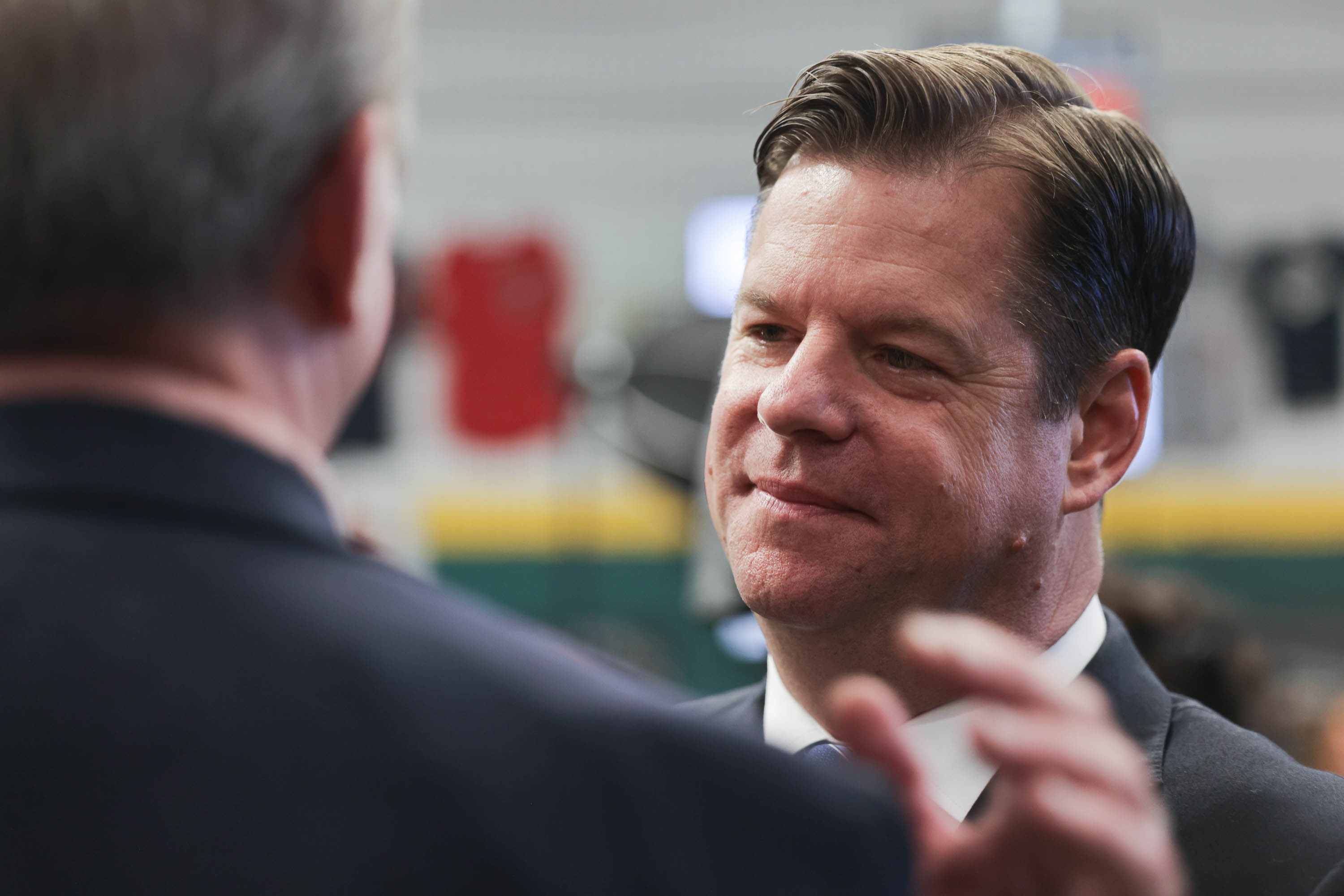Adding fuel to the fire over how San Francisco should handle its deadly fentanyl crisis, mayoral candidate Mark Farrell on Thursday called for deploying armed National Guard troops in the Tenderloin and South of Market neighborhoods.
Farrell, a former interim mayor and city supervisor who has carved out the most tough-on-crime lane among the three leading moderate candidates in the November mayor’s race, also said that if elected he would declare a state of emergency targeting the drug crisis. He has previously called for a citywide street vending ban and for putting retired cops back on the street.
“The conditions on our streets have never been worse,” said Farrell in an interview. “The drug crisis has never been worse.”
San Francisco experienced a record-breaking 806 fatal overdoses in 2023, though not all of the deaths were attributed to fentanyl.
Farrell’s announcement comes a day after rival candidate Daniel Lurie, a nonprofit leader and Levi’s heir, unveiled a similar state of emergency proposal, though he did not call for National Guard troops.
Joe Arellano, a spokesperson for Mayor London Breed’s reelection campaign, slammed the idea of deploying National Guard members on the streets.
“In Mark Farrell’s San Francisco, armed National Guard troops will fence off the Tenderloin and create the Green Zone, truly creating a Baghdad by the Bay,” Arellano said. “Residents and commuters aren’t looking for a police state. They want a leader that will meaningfully address the fentanyl crisis with enforcement and compassion, not Humvees and AR-15s.”
Exactly what a state of emergency would enable is unclear. In the past, the city has used such declarations to get around certain bureaucratic barriers like contracting, zoning and planning rules to get facilities open rapidly.
Both Lurie and Farrell said they would utilize the special powers offered by the state of emergency to fast-track resources toward offering services to drug users.
Besides Breed, some addiction experts criticized such an aggressive approach and questioned the feasibility of the plans.
Proposals beyond the National Guard
In addition to the troops and the emergency declaration, Farrell said he would also like to open a center that’s accessible 24 hours a day and offers shelter space and referrals for treatment. The campaign did not release a specific location for the facility.
He said the city should take advantage of city-owned sites outside of San Francisco to have drug users get help, perhaps repurposing Log Cabin Ranch, a facility in San Mateo County previously used for troubled youth. He also wants to mandate treatment for anyone who is revived on the streets with Narcan, a nasal spray that can reverse overdoses.
The Department of Public Health distributed over 100,000 doses of Narcan between January and September 2023, according to city data. Ambulances responded to 3,497 likely overdoses over the first seven months of last year. The city doesn’t require paramedics who are responding to an overdose call to take the person to the hospital if they refuse or are capable of understanding their decision, according to policy reviewed by The Standard.
With the city facing a budget crunch, Farrell suggests reallocating money from other city departments toward drug treatment. When asked which departments he envisioned being affected, he said he would take from the city’s community health and welfare budgets. Though he did not commit to a dollar figure, he said he wants to prioritize programs that are in the business of “saving lives.”
Last year, Breed and Gov. Gavin Newsom unveiled a joint law enforcement task force to investigate opioid-linked deaths and poisonings in the city that included the California Highway Patrol and the California National Guard, as well as the San Francisco Police Department. At the time, Maj. Gen. Matthew Beevers said California Guard analysts would “work behind the scenes to connect the dots—to identify dealers, suppliers and traffickers so law enforcement can secure justice.”
Deploying National Guard troops on the streets would be a significant escalation of the force’s involvement. New York’s governor recently sent hundreds of National Guard troops and state troopers into the New York City subway in an attempt to improve public safety.
A spokesperson for Farrell’s campaign said it was too early to say how many National Guard members he believes are needed or how many staff members would be required to run the 24/7 shelter and treatment referral center.
A spokesperson for the California Military Department declined to say how many National Guard members have worked with the city in combating the fentanyl crisis.
Breed declared state of emergency in 2021
Breed declared a state of emergency in the Tenderloin in December 2021 and created the Tenderloin Center, which was aimed at getting drug users treatment but ended up becoming a de facto safe injection site where illicit substances were being used openly. It closed a year later.
Keith Humphreys, a drug addiction expert and professor at Stanford University, said he felt that while Farrell’s proposals could be effective, much would depend on the execution.
“It’s pretty broad and underdeveloped,” said Humphreys. “It’s more of a promissory note.”
Humphreys said he does support an emergency declaration if its powers are used effectively. In addition, he saw merit in the idea of a 24/7 center—if it steers people into treatment—and in relocating people away from San Francisco to get help, provided there is a plan for what to do after they receive care. But the Stanford professor cautioned against bringing in National Guard troops to the city.
Gina McDonald, a member of Mothers Against Drug Addiction and Deaths who consulted on Farrell’s proposals, said she was “grateful” that he is calling for an emergency declaration.
“(Around 800) people died last year,” she said. “That’s unfathomable.”
